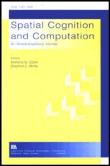
Spatial Cognition and Computation
metrics 2024
Exploring the Intersection of Mind and Machine
Introduction
Spatial Cognition and Computation is a premier academic journal published by TAYLOR & FRANCIS INC, focusing on the interdisciplinary fields of spatial cognition and computational analysis. With its ISSN 1387-5868 and E-ISSN 1542-7633, the journal has established itself as an authoritative source of innovative research since its inception in 2000. It is esteemed in various categories, receiving Q2 rankings in Computer Graphics and Computer-Aided Design, Computer Vision and Pattern Recognition, and Earth-Surface Processes, showcasing its impact in these dynamic fields. Additionally, it ranks in the Q3 tier for Experimental and Cognitive Psychology. The journal serves as a crucial platform for researchers, professionals, and students to explore cutting-edge developments and foster collaboration across disciplines. Although it is not currently an open-access journal, readers can access articles through library subscriptions or individual purchases, ensuring that its impactful research is widely disseminated in the academic community.
Metrics 2024
 0.53
0.53 1.60
1.60 1.60
1.60 42
42Metrics History
Rank 2024
Scopus
IF (Web Of Science)
JCI (Web Of Science)
Quartile History
Similar Journals
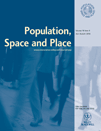
Population Space and Place
Illuminating Spatial Dimensions of Demographic ChangePopulation Space and Place is an esteemed academic journal published by WILEY, dedicated to advancing the fields of demography and geography, planning, and development. With an impressive 2023 impact factor and categorized in the top quartile (Q1) for both demography and geography, this journal serves as a vital platform for researchers, professionals, and students seeking to explore the spatial dimensions of population dynamics. Founded in 2004 and running through 2024, it has established itself as a significant contributor to scholarly discussions, evidenced by its high Scopus rankings, including rank #18 out of 139 in demography and #165 out of 821 in geography and planning. While the journal currently does not offer open access, it remains a key resource for those involved in academic research and policy formulation. With its focus on the interplay between population trends and spatial analytics, Population Space and Place is essential for anyone aiming to understand the complexities of population geography in a rapidly changing world.
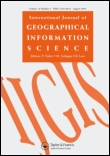
INTERNATIONAL JOURNAL OF GEOGRAPHICAL INFORMATION SCIENCE
Elevating Understanding of Geographic DynamicsThe INTERNATIONAL JOURNAL OF GEOGRAPHICAL INFORMATION SCIENCE, published by TAYLOR & FRANCIS LTD, stands as a premier platform in the fields of geography, planning and development, and information systems. With an impressive impact factor and recognized as a Q1 journal in 2023 across multiple categories, this esteemed publication underscores its significant role in advancing knowledge and application in geographical information sciences. Since its inception in 1997, the journal has provided vital insights and research findings, appealing to a diverse audience of researchers, professionals, and students dedicated to exploring the complexities of spatial data and its implications. Notably, it boasts exceptional Scopus rankings, positioning it among the top journals in its fields. While the journal does not offer open access, it remains a crucial resource for those looking to deepen their understanding and engagement with contemporary geographic and information science issues.

International Journal of Cartography
Advancing Cartographic Knowledge for a Global AudienceThe International Journal of Cartography, published by Taylor & Francis Ltd, is a pivotal platform for scholars and practitioners in the fields of geography, planning, and earth sciences. With an ISSN of 2372-9333 and an E-ISSN of 2372-9341, this journal serves as a vital resource for exploring innovative cartographic methodologies and advances in spatial data visualization. Recognized in the 2023 category quartiles as Q4 in Computers in Earth Sciences and Q3 in both Earth and Planetary Sciences and Geography, Planning and Development, the journal operates at the intersection of traditional mapping techniques and modern technological developments. The journal’s research aims to foster interdisciplinary dialogue and inspire new applications of cartography within both academic and professional contexts. Although it does not currently operate on an open access model, it remains accessible to a broad audience through institutional subscriptions. With converged publication years from 2015 to 2024, the International Journal of Cartography is committed to enhancing our understanding of spatial relationships and promoting innovative cartographic practices on a global scale.

Journal of Spatial Information Science
Innovating Research at the Intersection of Geography and TechnologyThe Journal of Spatial Information Science is a premier open-access journal published by the University of Maine, dedicated to advancing research in the interdisciplinary fields of spatial information science, geography, and computer science. With an ISSN of 1948-660X, this journal has established itself as a significant contributor to the academic community since its inception in 2010, achieving notable rankings as evidenced by its classification in the Q2 quartile across multiple categories, including Computers in Earth Sciences and Geography. The journal offers a platform for innovative research, fostering collaboration and knowledge dissemination among researchers and practitioners. Its impact is further underscored by its Scopus rankings, placing it in the top percentiles across critical disciplines. With Open Access options available, the Journal of Spatial Information Science ensures that high-quality research is accessible to a broader audience, promoting the ongoing development of the field through thoughtful and rigorous academic inquiry.
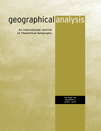
GEOGRAPHICAL ANALYSIS
Exploring the Depths of Earth-Surface ResearchGEOGRAPHICAL ANALYSIS, published by WILEY, is a premier scholarly journal that has been at the forefront of geographical and earth-surface research since its inception in 1969. With an ISSN of 0016-7363 and an E-ISSN of 1538-4632, this journal has established itself as an essential resource for researchers and professionals in the fields of Earth-Surface Processes and Geography, Planning and Development, achieving impressive rankings of 13th and 60th in their respective categories according to Scopus, placing it in the Q1 quartile for both. The journal is renowned for its rigorous peer-reviewed articles that contribute valuable insights into spatial analysis, environmental impacts, and urban planning, thus fostering a deeper understanding of geographical phenomena. With access options available through traditional subscriptions, GEOGRAPHICAL ANALYSIS continues to serve as a critical platform for the dissemination of cutting-edge research and innovative methodologies, ultimately shaping the future of geographical inquiry and application.
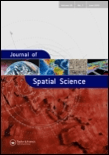
Journal of Spatial Science
Illuminating Connections in Atmospheric and Energy ResearchThe Journal of Spatial Science, published by Taylor & Francis Ltd, serves as a prominent platform for the dissemination of research in the interdisciplinary fields of geography, atmospheric science, and energy. With an ISSN of 1449-8596 and an E-ISSN of 1836-5655, this journal has established itself as a vital resource since its inception in 2004, boasting an impressive convergence period extending to 2024. Recognized in the Q3 quartile for Atmospheric Science and Energy (miscellaneous), and achieving a Q2 classification in Geography, Planning and Development in 2023, the journal not only reflects the evolving complexities of spatial science but also underscores its increasing relevance in addressing contemporary global challenges. The journal holds a commendable position in Scopus rankings, with notable placements in various categories, further highlighting its academic significance. Researchers, professionals, and students are encouraged to engage with the rich content offered, as the Journal of Spatial Science remains committed to advancing knowledge and fostering discussions pertinent to spatial analysis and its applications.
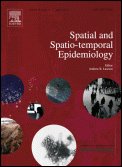
Spatial and Spatio-Temporal Epidemiology
Transforming Data into Actionable Health InsightsSpatial and Spatio-Temporal Epidemiology is a premier journal dedicated to advancing the understanding of spatial patterns and temporal dynamics in epidemiological research. Published by ELSEVIER SCI LTD in the United Kingdom, this journal utilizes a robust interdisciplinary approach, blending methodologies from epidemiology, geography, and environmental science. With an impressive impact factor and categorized in the top quartiles for its fields—Q2 in Epidemiology and Q1 in Geography, Planning and Development (2023)—this journal excels in providing high-quality insights relevant to both academic researchers and public health professionals. The journal supports open access options, enhancing the dissemination and impact of scholarly articles. Since its inception in 2009, Spatial and Spatio-Temporal Epidemiology has published a myriad of studies that contribute significantly to understanding the geographical and temporal aspects of diseases, thereby serving as a crucial resource for anyone invested in improving public health outcomes and addressing infectious diseases globally.

Boletim de Ciencias Geodesicas
Advancing Earth Sciences Through Open Access ResearchBoletim de Ciências Geodésicas is an esteemed academic journal published by the Universidade Federal do Paraná within its Centro Politécnico. Focused on the dynamic field of Earth and Planetary Sciences, this Open Access journal has been a pivotal resource since 1997, fostering the dissemination of critical research and innovative methodologies. With an impact factor indicative of its relevance in the discipline, Boletim de Ciências Geodésicas ranks in the Q3 quartile for Earth and Planetary Sciences as of 2023, showcasing its commitment to quality scholarship in a competitive field. Researchers and students alike will benefit from access to cutting-edge findings, given its broad scope that encompasses various aspects of geodesy and related sciences. The journal's convergence of research from 2005 to 2024 ensures that it remains at the forefront of emerging trends and fundamental developments in the discipline, further enhancing its esteemed reputation in the academic community.
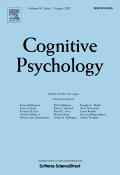
COGNITIVE PSYCHOLOGY
Innovating Understanding of Thought ProcessesCOGNITIVE PSYCHOLOGY is a premier academic journal published by Academic Press Inc. Elsevier Science, specializing in the dynamic and evolving field of cognitive psychology. With a significant history spanning from 1970 to 2024, this journal has established itself as a critical resource for researchers and professionals alike, boasting a distinguished ranking in the Q1 category across multiple disciplines, including Experimental and Cognitive Psychology, Neuropsychology, and Artificial Intelligence. Its impact factor, reflective of its influence and reputation within the academic community, positions COGNITIVE PSYCHOLOGY as an essential platform for disseminating cutting-edge research and theoretical advancements. Although it is not open access, subscribers gain exclusive insights into the latest findings that drive the field forward. The journal's commitment to fostering innovative research makes it an indispensable tool for those dedicated to understanding the complexities of human cognition.

Geograficidade
Navigating the Future of Environmental Studies TogetherGeograficidade is an esteemed academic journal published by the Federal University of Fluminense in Brazil, focusing on the interdisciplinary fields of geography, spatial analysis, and environmental studies. With its ISSN 2238-0205, this journal serves as a crucial platform for researchers, professionals, and students to disseminate innovative research, theoretical discussions, and practical applications pertaining to geographic phenomena. Although currently not listed as open access, Geograficidade aims to make significant contributions to the understanding of geographic dynamics and their implications on societal and environmental issues. The journal emphasizes the importance of rigorous scholarship and encourages submissions that explore contemporary geographical challenges and promote sustainable solutions. Its vibrant community of scholars fosters a rich dialogue, making Geograficidade a vital resource for anyone engaged in geographic research and academia.